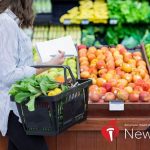
It’s not just sagging that ages a face, but loss of fat under the skin as well, according to a new study. The findings could help plastic surgeons give their patients a more natural look, the study authors said. For the study, researchers analyzed CT scans of the faces of 19 people, taken at least a decade apart. The study participants were an average age of 46 at the time of the first scan and 57 on average at the second scan. The patients weren’t undergoing facelift surgery or other cosmetic procedures. The scans were useful for measuring changes in fat deposits in the midface, which is the area between the eyes and the mouth. The total volume of facial fat decreased by about 12% at the follow-up scan. Fat volume in the superficial compartment, which is just under the skin, decreased by an average of about 11%, while there was a greater loss in the deep facial fat compartment, an average reduction of more than 18%, the investigators found. The findings support the volume loss theory, according to the report published in the February issue of Plastic and Reconstructive Surgery. “In particular, we think that deep facial fat loss removes support from the overlying fat,” said study author Dr. Aaron Morgan, of the Medical College of Wisconsin, in Milwaukee. “That causes deepening of the… read on > read on >
























-300x200.jpg)










